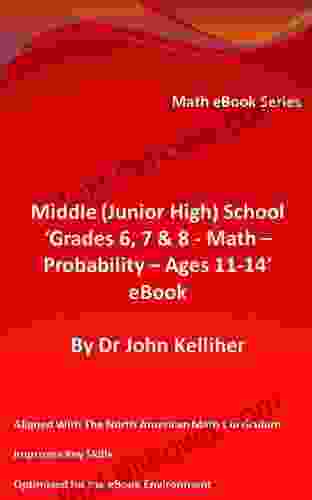Unleash the Power of 3D Displays: A Comprehensive Guide to Computer Generated Phase Only Holograms

The pursuit of creating realistic and immersive 3D displays has been a long-standing dream in the field of optics. With the advent of computer generated holography, this dream is now becoming a reality. Computer generated phase only holograms (CGPHs) offer a revolutionary approach to 3D display technology, enabling the creation of high-quality, full-color holograms that can be viewed without the need for special glasses.
5 out of 5
| Language | : | English |
| File size | : | 11251 KB |
| Text-to-Speech | : | Enabled |
| Enhanced typesetting | : | Enabled |
| Print length | : | 210 pages |
| Screen Reader | : | Supported |
Fundamentals of Computer Generated Phase Only Holograms
CGPHs are based on the principles of holography, a technique that allows for the recording and reconstruction of 3D objects using light. In traditional holography, a physical object is illuminated with a coherent light source, and the resulting interference pattern is captured on a photographic plate. This interference pattern, known as a hologram, contains all the information necessary to reconstruct the original object.
CGPHs take a different approach by using a computer to generate the interference pattern directly. This allows for greater control over the hologram's properties, such as the size, shape, and depth of the reconstructed object. CGPHs are created by calculating the phase shifts that occur when light passes through the object and then converting these phase shifts into a digital representation. This digital representation can then be displayed on a spatial light modulator (SLM),which converts the digital information into a physical light pattern that recreates the original object.
Technologies for Computer Generated Phase Only Holograms
There are several different technologies that can be used to create CGPHs. The most common approach is to use a liquid crystal display (LCD) SLM. LCD SLMs are relatively inexpensive and easy to use, making them a good choice for holographic displays. However, LCD SLMs have a limited dynamic range, which can result in holograms with reduced contrast and color accuracy.
Another approach to creating CGPHs is to use a digital micromirror device (DMD) SLM. DMD SLMs offer a higher dynamic range than LCD SLMs, resulting in holograms with improved contrast and color accuracy. However, DMD SLMs are more expensive than LCD SLMs and can be more difficult to use.
In addition to LCD and DMD SLMs, other technologies that can be used to create CGPHs include phase-only spatial light modulators (POSLMs) and acousto-optic modulators (AOMs). POSLMs offer the highest dynamic range of all SLM technologies, but they are also the most expensive and difficult to use. AOMs offer a good compromise between performance and cost, but they are not as versatile as LCD and DMD SLMs.
Applications of Computer Generated Phase Only Holograms
CGPHs have a wide range of potential applications, including:
- Holographic displays: CGPHs can be used to create holographic displays that provide immersive 3D experiences. These displays can be used for a variety of applications, such as gaming, entertainment, and education.
- Augmented reality: CGPHs can be used to create augmented reality (AR) experiences that overlay digital information onto the real world. AR applications can be used for a variety of purposes, such as navigation, shopping, and entertainment.
- Virtual reality: CGPHs can be used to create virtual reality (VR) experiences that immerse the user in a completely digital world. VR applications can be used for a variety of purposes, such as gaming, training, and therapy.
- Optical metrology: CGPHs can be used for optical metrology applications, such as surface profiling and particle sizing. These applications can be used in a variety of industries, such as manufacturing, aerospace, and healthcare.
Future Prospects for Computer Generated Phase Only Holograms
The field of computer generated holography is still in its early stages, but it has the potential to revolutionize the way we interact with visual information. CGPHs offer a number of advantages over traditional display technologies, including:
- Higher resolution: CGPHs can produce holograms with higher resolution than traditional displays. This allows for more detailed and realistic images.
- Wider viewing angle: CGPHs can be viewed from a wider angle than traditional displays. This makes them more suitable for large-scale displays and immersive experiences.
- Reduced eye strain: CGPHs can reduce eye strain compared to traditional displays. This is because CGPHs do not require the use of special glasses, which can cause eye fatigue over time.
As the field of computer generated holography continues to develop, we can expect to see even more innovative and groundbreaking applications for this technology. CGPHs have the potential to change the way we see the world, opening up new possibilities for education, entertainment, and communication.
Computer generated phase only holograms (CGPHs) are a revolutionary new technology that has the potential to transform the way we interact with visual information. CGPHs offer a number of advantages over traditional display technologies, including higher resolution, wider viewing angle, and reduced eye strain. As the field of computer generated holography continues to develop, we can expect to see even more innovative and groundbreaking applications for this technology.
5 out of 5
| Language | : | English |
| File size | : | 11251 KB |
| Text-to-Speech | : | Enabled |
| Enhanced typesetting | : | Enabled |
| Print length | : | 210 pages |
| Screen Reader | : | Supported |
Do you want to contribute by writing guest posts on this blog?
Please contact us and send us a resume of previous articles that you have written.
 Book
Book Novel
Novel Page
Page Chapter
Chapter Text
Text Story
Story Genre
Genre Reader
Reader Library
Library Paperback
Paperback E-book
E-book Magazine
Magazine Newspaper
Newspaper Paragraph
Paragraph Sentence
Sentence Bookmark
Bookmark Shelf
Shelf Glossary
Glossary Bibliography
Bibliography Foreword
Foreword Preface
Preface Synopsis
Synopsis Annotation
Annotation Footnote
Footnote Manuscript
Manuscript Scroll
Scroll Codex
Codex Tome
Tome Bestseller
Bestseller Classics
Classics Library card
Library card Narrative
Narrative Biography
Biography Autobiography
Autobiography Memoir
Memoir Reference
Reference Encyclopedia
Encyclopedia Mary Paganelli Votto
Mary Paganelli Votto Said Aghil Baaghil
Said Aghil Baaghil Leslie Patten
Leslie Patten Michael Bibby
Michael Bibby Matt Dunn
Matt Dunn Maricela Soberanes
Maricela Soberanes Etel Adnan
Etel Adnan Marian Hale
Marian Hale Michael Dresel
Michael Dresel Roberto Moro Visconti
Roberto Moro Visconti Matthew Moocarme
Matthew Moocarme Meredith Hill
Meredith Hill Marlene Perez
Marlene Perez Matthew Silverman
Matthew Silverman Matt Artz
Matt Artz Mark Sinclair
Mark Sinclair Mary C Eastland
Mary C Eastland Marilyn Friesen
Marilyn Friesen Mary Anne White
Mary Anne White Salim Sultan
Salim Sultan
Light bulbAdvertise smarter! Our strategic ad space ensures maximum exposure. Reserve your spot today!

 Owen SimmonsMiddle Junior High School Grades Math Probability Ages 11-14 Ebook: A Gateway...
Owen SimmonsMiddle Junior High School Grades Math Probability Ages 11-14 Ebook: A Gateway... Benjamin StoneFollow ·5.9k
Benjamin StoneFollow ·5.9k Alfred RossFollow ·19.5k
Alfred RossFollow ·19.5k Henry GreenFollow ·6.2k
Henry GreenFollow ·6.2k Isaiah PowellFollow ·7.1k
Isaiah PowellFollow ·7.1k Charles DickensFollow ·5.8k
Charles DickensFollow ·5.8k Luke BlairFollow ·17.8k
Luke BlairFollow ·17.8k Eric NelsonFollow ·16.6k
Eric NelsonFollow ·16.6k VoltaireFollow ·4.4k
VoltaireFollow ·4.4k

 Boris Pasternak
Boris PasternakThree Walking: An Immersive Journey into the Heart of...
Immerse yourself in the...

 Connor Mitchell
Connor MitchellUnveiling the Secrets of Archery: Discover "Learnt It...
Archery, an...

 Craig Blair
Craig BlairUnveiling the Secrets of Success: Arrogance Millz Day
Are you ready to unlock...

 Damon Hayes
Damon HayesThe Diary and Letters of America's Minister to France...
In the year 1870, as the...

 Hector Blair
Hector BlairCapoeira: A Journey Through History, Culture, and the...
Origins and...
5 out of 5
| Language | : | English |
| File size | : | 11251 KB |
| Text-to-Speech | : | Enabled |
| Enhanced typesetting | : | Enabled |
| Print length | : | 210 pages |
| Screen Reader | : | Supported |












